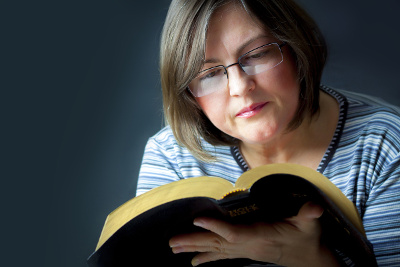The excitement of re-reading the Bible
- Ruth Baker •
- 17 February 2020
 The Bible is big. Like, really big, with lots of words and no pictures (in my one, anyway). You can read it a thousand times and still find new things. But reading the Bible is also difficult, so while from one perspective we can happily say “I learn new things every time!”, seen another way we may sadly think, “Why did I miss that last time?”
The Bible is big. Like, really big, with lots of words and no pictures (in my one, anyway). You can read it a thousand times and still find new things. But reading the Bible is also difficult, so while from one perspective we can happily say “I learn new things every time!”, seen another way we may sadly think, “Why did I miss that last time?”
We miss details for lots of reasons: we’re so busy that half our brain is still thinking about something else; it’s the book of Numbers (and who reads that properly?); we’re skim reading during the two minutes of time we have between adjudicating sibling squabbles; and, “I’ve read it heaps and I know all this”.
That’s why, when you see—or someone shows you—a new gem, it’s like uncovering a treasure chest. It takes your breath away. And this is one reason why we must persevere with reading and studying the Bible, over and over again, especially when we think there’s nothing new to discover.
Obviously, the Bible is full of such gems, but here’s one that’s excited me lately and might be new for you too.
In Genesis 28, Jacob (son of Isaac, father of Joseph and his 11 brothers) heads off to find himself a wife. On the way to Paddan-aram, he has a dream:
… behold, there was a ladder set up on the earth, and the top of it reached to heaven. And behold, the angels of God were ascending and descending on it! (v. 12)
This becomes popularly described as ‘Jacob’s ladder’. Jacob names the place Bethel, which means “house of God”.
Cut to a thousand odd years later, when Jesus calls Nathaniel to follow him and says during the exchange: “Truly, truly, I say to you, you will see heaven opened, and the angels of God ascending and descending on the Son of Man” (John 1:51). Jesus literally describes himself as Jacob’s ladder: the stairway between heaven and earth. Except in Jacob’s dream the ladder rests on earth, while in John the ladder rests on Jesus, the Son of Man.
When Jacob wakes, he thinks “Surely the Lord is in this place, and I did not know it” (v. 16). Surely this must have been Nathaniel and the disciples’ reaction as the penny drops. The Lord is right in front of them, and they were not aware.
Then Jacob:
…was afraid and said, “How awesome is this place! This is none other than the house of God, and this is the gate of heaven.” (v. 17)
Elsewhere in John, Jesus is described in ‘house’ terms. In 1:14, John says that “the Word became flesh and dwelt among us”. The word ‘dwelt’ in the Greek is the same as “to tent” or “to tabernacle” (even though those aren’t verbs as we know them in English). It’s a clear way of saying that, just as God had dwelt in his fullness in the tabernacle, so now God rests in his fullness in Jesus.
Jesus is the house of God. He is the gate of heaven.
Now, we know Jesus is God’s temple, and we know he is the gate of heaven. Of course we know this. We hear it often. Jesus is God on earth. He’s the image of the invisible God. But do we really get how deeply profound this declaration is? If you are anything like me, you know it, but you need to be reminded. That’s why this link of Jacob’s ladder feels so momentous for me. It’s incredibly beautiful.
Jesus is the very gate to heaven. We walk through him to enter into God’s presence. This truth re-acquaints me with the magnitude of God. It reminds of the sheer beauty of who Jesus is. It shows me his power and mercy and faithfulness. It is a truth embedded from Genesis to John and beyond.
The only way we will know and remember truths like this is if we are so close to the Bible that we continue to give ourselves the opportunity to see something for the first time, the chance to spot something odd and look it up or ask about it at Bible study. Without regular time in Scripture, familiar or not, we will miss allusions that bring us closer to understanding God himself.




